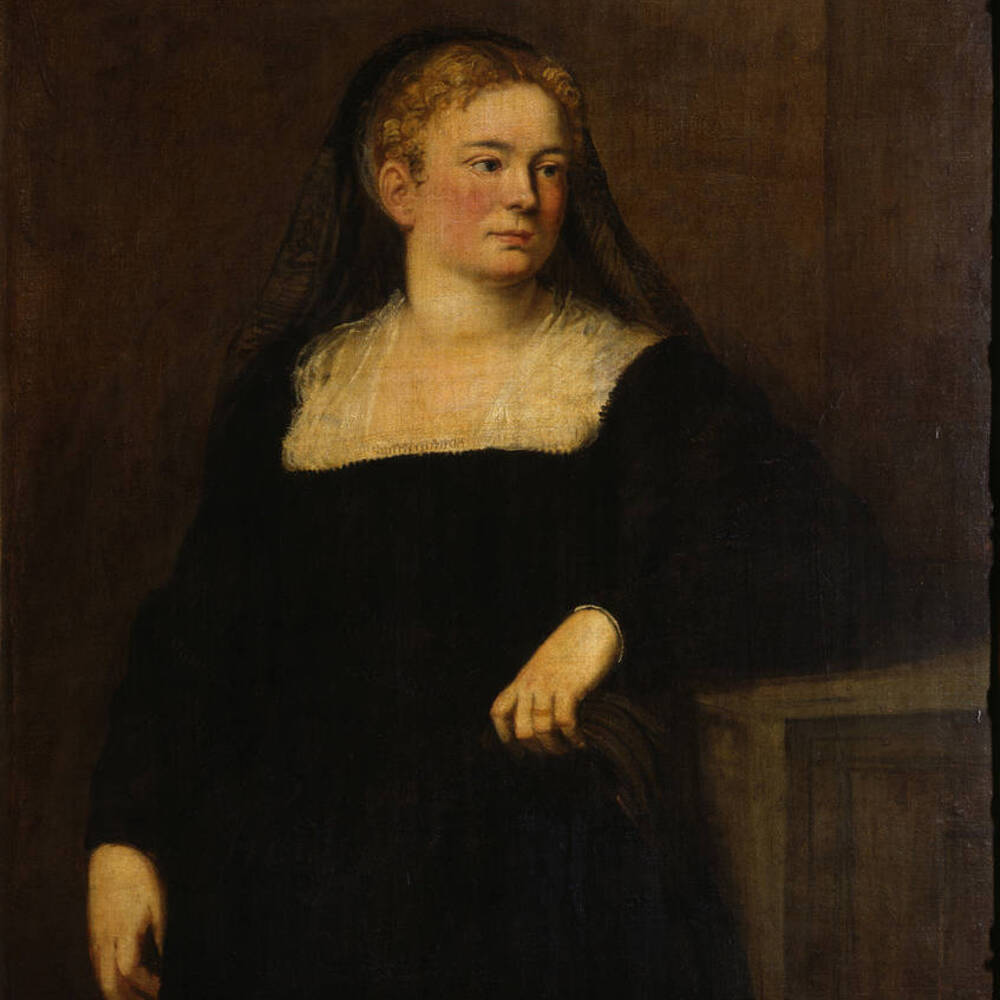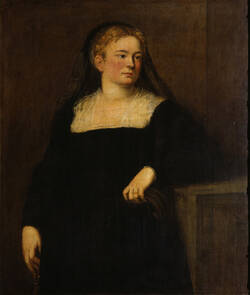Many aristocrats had their portraits painted by Tintoretto in Venice, but only three portraits of women by him have survived. Depictions of widows from this period are extremely rare. The light emphasizes the head and hands. This unnamed bereaved woman holds a rosary and a pair of gloves. Her wedding ring is a reference to her husband. The combination of a long black dress with a black veil identifies her as being in mourning, but in Venice this colour was not reserved exclusively for bereavement.
Further Media
When Tintoretto painted this work, he was in his early to mid-30s and had already made a name for himself in Venice. Here, he has worked with a very reduced palette, composing this portrait almost solely in tones of black, brown and ochre. There is a touch of red in the woman’s cheeks and a tiny accent of blue in her eyes with their contemplative gaze. Tintoretto has also painted with brilliant ease the white lace material over the woman’s shoulders and across the neckline of her dress. His play of light is just as virtuoso, as is his use of strong tonal contrasts between light and shade.
His woman in mourning seems incredibly alive, almost as if we could feel her presence – an effect further intensified by her natural pose. While in the early Renaissance, portraits were still generally rendered in strict profile, this new form of portraiture emerged in Venice.
At that time, husbands and wives were commonly portrayed in companion portraits, painted on individual canvases but set so the figures would face each other. Traditionally, the wife’s portrait was hung on the right, so she looked to the left to face her husband. But Tintoretto poses this widow gazing to the right. He turns her body to the left, intensifying the tension in the composition.
Tintoretto has only included the woman’s rosary and black widow’s clothes as indications of mourning, leaving out such common attributes as a prayer book, a handkerchief or a devotional image. Instead, he focuses entirely on the aura of the woman’s personality.
- Location & Dating
- c. 1550/55
- Material & Technique
- Oil on canvas
- Dimenions
- 104 x 87 cm
- Museum
- Gemäldegalerie Alte Meister
- Inventory number
- Gal.-Nr. 265 A

